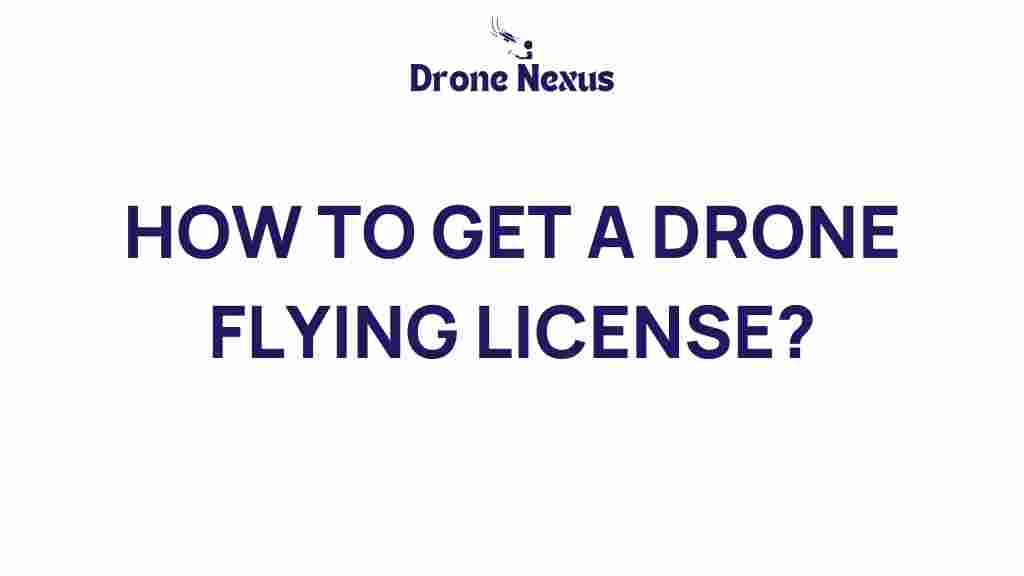Unlocking the Skies: Your Path to a Drone Flying License
In recent years, drones have become an integral part of various industries, from agriculture and photography to public safety and deliveries. However, operating a drone legally and safely requires obtaining a drone flying license. This article will guide you through the process of unlocking the skies with your very own drone flying license, ensuring you can take full advantage of this exciting technology.
Understanding the Importance of a Drone Flying License
Before diving into the process of obtaining a drone flying license, it’s essential to understand why having one is crucial. Here are some key reasons:
- Legal Compliance: Most countries require drone operators to have a license to fly legally.
- Safety: Licensing ensures that operators are knowledgeable about safe flying practices.
- Insurance and Liability: Many insurance providers require a license to cover drone operations.
- Professional Opportunities: A drone flying license opens doors to commercial opportunities in various industries.
Types of Drone Flying Licenses
Depending on your location and the type of drone operations you intend to conduct, there are different types of drone flying licenses you can pursue. Generally, these fall into two categories:
- Recreational License: For hobbyists flying drones under a specific weight limit and within certain regulations.
- Commercial License: Required for individuals who intend to use drones for business purposes, such as aerial photography, surveying, and inspections.
Step-by-Step Process to Obtain Your Drone Flying License
Obtaining your drone flying license can seem daunting, but breaking it down into manageable steps can streamline the process. Here’s a comprehensive guide to help you get started:
Step 1: Understand the Regulations
Before you start the licensing process, familiarize yourself with the regulations set by your country’s aviation authority. For instance, in the United States, the Federal Aviation Administration (FAA) governs drone operations. Similarly, in the UK, the Civil Aviation Authority (CAA) oversees regulations. Key points to consider include:
- Maximum altitude limits
- No-fly zones (e.g., near airports, military bases)
- Weight restrictions for drones
- Required equipment (e.g., remote ID)
Step 2: Choose the Right Course
Once you understand the regulations, the next step is to enroll in a drone training course. Look for accredited programs that offer comprehensive training on:
- Drone operation and control
- Safety protocols and risk management
- Understanding airspace and weather conditions
- Regulatory compliance
Many courses are available online, making it easier to fit training into your schedule. Check out resources like Drone Pilot Ground School for more information.
Step 3: Prepare for the Exam
After completing your training course, you’ll need to pass an exam to obtain your drone flying license. Here are some tips to prepare:
- Review course materials thoroughly.
- Take practice tests available online.
- Join forums and communities to discuss potential exam questions.
- Stay updated on any changes in regulations or procedures.
Step 4: Take the Exam
Once you feel prepared, schedule your exam. Depending on your country, this may be a written test, a practical flying test, or both. Remember to:
- Arrive early and bring necessary identification.
- Read all questions carefully before answering.
- Stay calm and focused during the exam.
Step 5: Apply for Your License
After successfully passing the exam, the next step is to apply for your drone flying license. This often involves:
- Submitting proof of exam completion.
- Paying a licensing fee.
- Providing any required documentation, such as identification and training certificates.
Processing times may vary, so be patient as you await your license.
Step 6: Stay Informed and Compliant
Once you receive your drone flying license, your responsibilities are not over. It’s crucial to stay informed about any changes in regulations and continue to practice safe flying. Consider the following:
- Join a local drone club to network with other pilots.
- Keep your knowledge updated through continuous education and training.
- Review the rules and regulations regularly to ensure compliance.
Troubleshooting Common Issues
As with any process, you may encounter challenges while working toward your drone flying license. Here are some common issues and their solutions:
Issue 1: Difficulty Understanding Regulations
If you find the regulations confusing, consider reaching out to:
- Your local aviation authority for clarification.
- Online forums or communities where experienced pilots can offer guidance.
Issue 2: Preparing for the Exam
Many candidates feel anxious before the exam. To combat this:
- Practice relaxation techniques, such as deep breathing.
- Take mock exams to build confidence.
- Study with a friend or fellow pilot to share knowledge and insights.
Issue 3: Application Delays
If your application is delayed or you encounter issues, contact the licensing authority immediately for assistance. Keeping a record of all communications can be helpful.
Conclusion
Obtaining a drone flying license is an essential step for anyone looking to fly drones legally and responsibly. By following the structured path outlined in this article, you can navigate the process with confidence. Whether you’re pursuing recreational flying or commercial opportunities, holding a drone flying license ensures that you are well-prepared to unlock the skies. Enjoy your journey into the world of drone flying, and remember to stay safe and compliant!
For additional resources and information, visit Drones for Good to discover how drones are positively impacting various sectors.
This article is in the category Safety and created by DroneNexus Team
